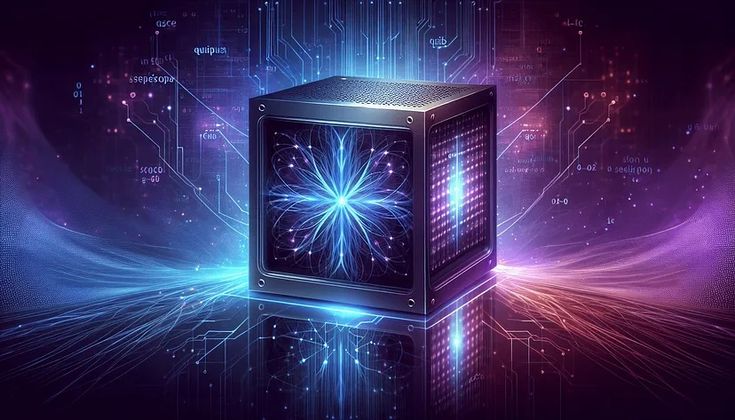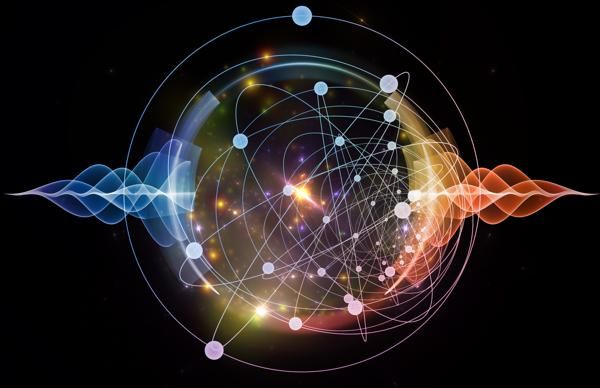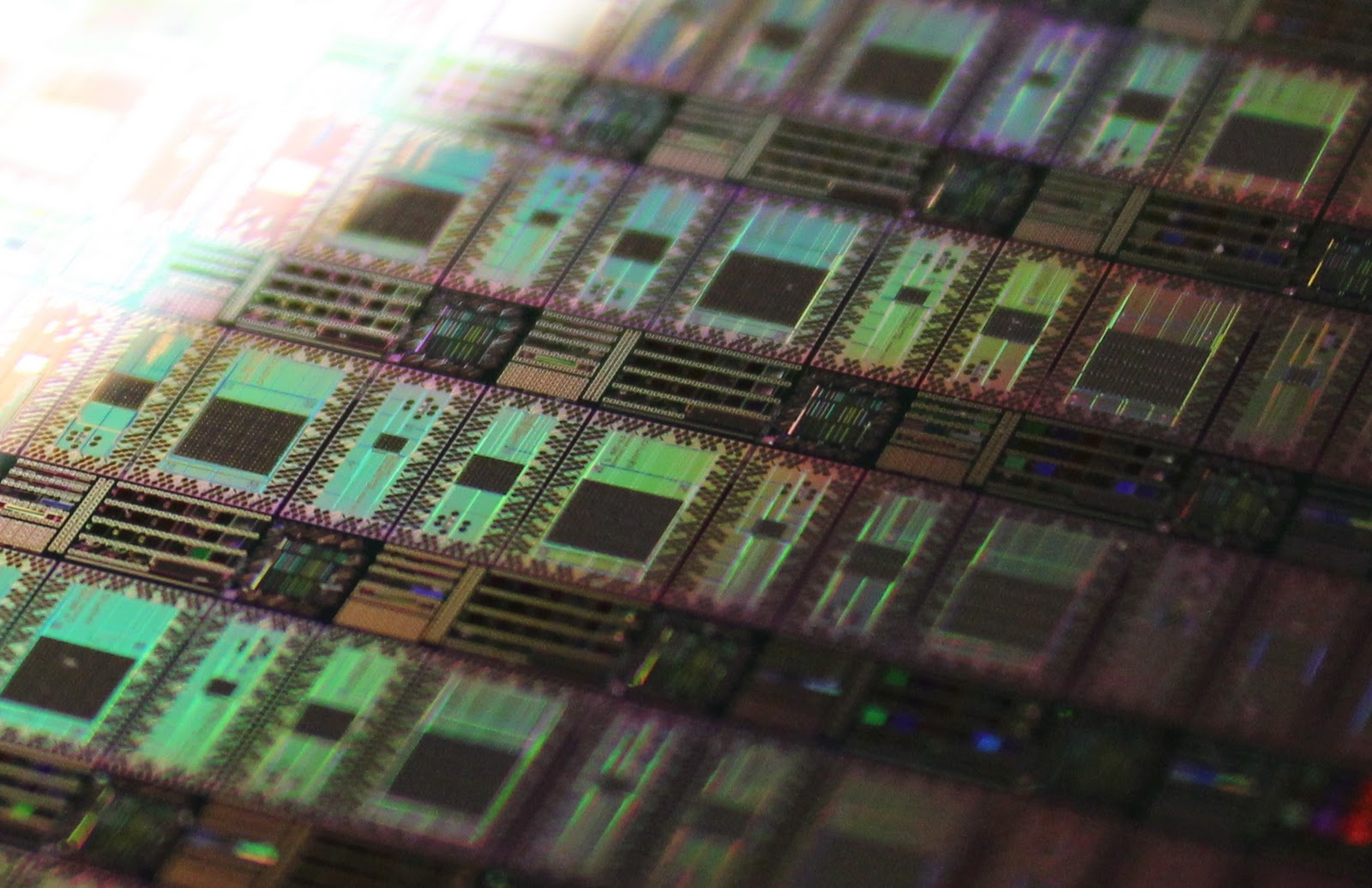Imagine a computer that can solve problems so complex that even the fastest supercomputers on Earth would take billions of years to crack. This isn’t science fiction; it’s the promise of quantum computing. Far from being a mere faster version of your laptop, quantum computing represents a radical departure from traditional computation, harnessing the mind-bending principles of quantum mechanics—the physics governing the universe at its most fundamental, subatomic level. By leveraging phenomena like superposition and entanglement, quantum computers open up entirely new avenues for processing information, poised to revolutionize fields from medicine and materials science to artificial intelligence and cybersecurity. Understanding this complex subject simply unveils the immense potential of future computational power.
The Limitations of Classical Computing: Why We Need Quantum
To truly grasp the revolutionary nature of quantum computing, it’s essential to first understand the fundamental way our current, classical computers operate and where their inherent limitations lie.
A. The Building Blocks: Bits and Binary
Our everyday computers, from smartphones to massive data centers, operate on a principle known as classical computing.
- Binary System: At its core, classical computing relies on the binary system, where all information is represented as bits. A bit is the smallest unit of data, existing in one of two distinct states: 0 or 1. Think of it like a light switch that is either on or off.
- Transistors as Switches: These 0s and 1s are physically represented by tiny electronic switches called transistors. Billions of these transistors are etched onto silicon chips, rapidly switching between on (1) and off (0) states to perform calculations.
- Sequential Processing: Classical computers typically process information sequentially. Even when performing parallel operations, they break down complex problems into a series of smaller, discrete steps, executing them one after another.
- Limits of Moore’s Law: For decades, the exponential increase in computing power was largely governed by Moore’s Law, which predicted the doubling of transistors on a chip roughly every two years. However, as transistors approach atomic limits, physical constraints like heat dissipation, power consumption, and the quantum effects at tiny scales are making further miniaturization increasingly difficult and expensive. This signals a looming plateau in traditional computational growth.
B. The Challenge of Exponential Complexity
While classical computers are incredibly powerful for most tasks, they hit a fundamental wall when faced with problems of exponential complexity.
- Brute Force Limitations: For certain types of problems, the only known way to find a solution is to try every possible combination or permutation. As the number of variables increases, the number of possibilities explodes exponentially. Even a supercomputer would take billions of years to check all combinations for a relatively small number of variables.
- Simulation Barriers: Simulating complex systems, such as molecular interactions for drug discovery, material properties at the atomic level, or intricate financial models, requires tracking vast numbers of interacting variables simultaneously. Classical computers struggle to efficiently model these systems due to their discrete bit nature and the sheer number of possible states.
- Optimization Challenges: Finding the absolute best solution among a massive number of possibilities (optimization problems like logistics, route planning, or resource allocation) can quickly become computationally intractable for classical machines.
- Cryptography and Prime Factors: While classical computers are excellent at encryption, certain cryptographic challenges, like factoring very large numbers (which underpins many current encryption methods like RSA), become exponentially harder for classical machines as the number of digits increases, making them theoretically vulnerable to sufficiently powerful quantum computers.
These inherent limitations of classical bits and sequential processing are precisely where quantum computing offers a revolutionary alternative, by leveraging the peculiar rules of the subatomic world.
The Mind-Bending Principles of Quantum Computing
Quantum computing fundamentally redefines how information is stored and processed, drawing on three bizarre yet powerful principles from quantum mechanics.
A. Qubits: The Quantum Bit
The fundamental building block of a quantum computer is the qubit (quantum bit). Unlike a classical bit, a qubit can exist in more than just a 0 or a 1 state.
- Superposition: A qubit can be in a superposition of both 0 and 1 simultaneously. Imagine a spinning coin that is neither heads nor tails until it lands. A qubit is like that spinning coin, existing in a probabilistic combination of states. This means a single qubit can represent much more information than a classical bit. For example, two classical bits can be in one of four states (00, 01, 10, 11) at any given time. But two qubits in superposition can simultaneously represent all four of those states. This exponential increase in information density is where quantum computers gain their power.
- Physical Realizations: Qubits can be realized in various physical forms, each with its own advantages and challenges:
- Superconducting Qubits: Tiny circuits cooled to near absolute zero (-273°C) where electrons can flow without resistance, allowing their quantum states to be manipulated. (e.g., IBM, Google)
- Trapped Ions: Electrically charged atoms (ions) are suspended in a vacuum by electromagnetic fields, and their electron energy levels are manipulated by lasers. (e.g., IonQ)
- Photonic Qubits: Using individual photons (particles of light) and their properties (e.g., polarization) to encode quantum information. (e.g., PsiQuantum, Xanadu)
- Topological Qubits: Based on exotic particles (Majorana fermions) that are theorized to be more resistant to environmental noise. (e.g., Microsoft)
B. Entanglement: Quantum Interconnection
Entanglement is perhaps the most mysterious and powerful principle. When two or more qubits become entangled, their fates are inextricably linked, regardless of the physical distance separating them.
- Interdependent States: If two qubits are entangled, measuring the state of one instantly determines the state of the other, even if they are miles apart. This “spooky action at a distance” (as Einstein called it) is crucial for quantum computation.
- Massive Parallelism: Entanglement allows qubits to perform computations in a massively parallel fashion. Instead of trying combinations one by one, an entangled system can explore multiple possibilities simultaneously, dramatically accelerating the solution search space for certain problems.
- Quantum Gates: Just as classical computers use logic gates (AND, OR, NOT) to manipulate bits, quantum computers use quantum gates (e.g., Hadamard, CNOT) to manipulate qubits and their entanglement, performing computational operations.
C. Quantum Tunneling and Interference (Implicit)
While not always explicitly listed as a core principle for understanding quantum computing’s power, quantum phenomena like tunneling and interference are critical for how quantum computers actually operate and achieve their results.
- Tunneling: In quantum mechanics, particles can sometimes “tunnel” through energy barriers that would be impossible to cross classically. This is relevant in the physical operation of some qubit types.
- Interference: Quantum computers use interference to selectively amplify correct answers and cancel out incorrect ones. Imagine waves. If waves overlap in phase, they amplify. If they overlap out of phase, they cancel out. Quantum algorithms cleverly arrange operations so that paths leading to incorrect solutions interfere destructively (cancel out), while paths leading to correct solutions interfere constructively (amplify).
By harnessing superposition and entanglement, quantum computers can explore many potential solutions at once, leading to exponentially faster computation for specific types of problems that are intractable for classical machines. This parallelism is the source of their potential “quantum supremacy.”
The Quantum Advantage: What Quantum Computers Can Do
It’s crucial to understand that quantum computers are not general-purpose machines designed to replace your laptop. They are specialized tools, built to excel at specific classes of problems that are beyond the capabilities of even the most powerful classical supercomputers. This is where their “quantum advantage” lies.
A. Revolutionizing Drug Discovery and Material Science
This is one of the most promising and immediate applications of quantum computing.
- Molecular Simulation: Simulating the behavior of molecules and chemical reactions at the quantum level is incredibly complex for classical computers due to the exponential number of interacting particles and quantum states. Quantum computers can model these interactions with far greater accuracy and efficiency.
- Drug Design: Accelerating the discovery of new drugs by simulating how potential drug compounds interact with proteins and other biological targets, leading to more effective and targeted therapies.
- Novel Materials: Designing new materials with unprecedented properties (e.g., superconductors at room temperature, highly efficient catalysts, advanced battery materials) by accurately modeling their atomic and molecular structures. This could revolutionize energy, electronics, and manufacturing.
B. Breaking and Building Cryptography
Quantum computing poses both a threat and a solution to modern encryption.
- Cracking Current Encryption: Quantum computers, using algorithms like Shor’s algorithm, could efficiently factor very large numbers, which is the mathematical basis for widely used public-key encryption methods like RSA. This would render much of today’s internet communication and financial transactions vulnerable.
- Quantum-Safe Cryptography (Post-Quantum Cryptography): Researchers are actively developing new cryptographic algorithms that are designed to resist attacks from future quantum computers. Quantum computers will also be instrumental in designing and testing these new “quantum-safe” encryption standards.
- Quantum Key Distribution (QKD): Leveraging quantum mechanics to create unhackable methods for securely exchanging encryption keys, ensuring theoretically unbreakable communication channels.
C. Optimizing Complex Systems
Many real-world problems involve finding the optimal solution from an astronomically large number of possibilities. Quantum computers excel at these optimization problems.
- Logistics and Supply Chain: Optimizing complex global supply chains, vehicle routing (e.g., for delivery fleets), and manufacturing schedules, leading to massive efficiency gains and cost reductions.
- Financial Modeling: Performing highly complex financial simulations, portfolio optimization, risk analysis, and algorithmic trading at unprecedented speeds, leading to more stable and profitable financial markets.
- Resource Allocation: Optimizing the allocation of scarce resources (e.g., energy grids, network traffic, airline scheduling) to maximize efficiency and minimize waste.
D. Advancing Artificial Intelligence and Machine Learning
Quantum computing holds the potential to significantly enhance certain aspects of AI and machine learning.
- Quantum Machine Learning: Developing quantum algorithms for tasks like pattern recognition, classification, and data clustering, potentially accelerating training times for complex AI models or enabling entirely new forms of AI.
- Feature Selection and Optimization: Quantum computers could efficiently identify the most relevant features in vast datasets, improving the efficiency and accuracy of classical machine learning algorithms.
- Deep Learning Acceleration: While nascent, quantum approaches could potentially accelerate certain computationally intensive steps within deep learning networks.
E. Climate Modeling and Environmental Solutions
Quantum computers could contribute to solving some of the world’s most pressing environmental challenges.
- Climate Change Simulation: More accurately modeling complex climate systems, predicting weather patterns, and simulating the effects of environmental changes to inform policy decisions.
- New Catalyst Discovery: Designing highly efficient catalysts for carbon capture, more efficient fertilizer production, or cleaner industrial processes, significantly reducing energy consumption and pollution.
- Optimizing Renewable Energy Grids: Managing complex smart grids that integrate various renewable energy sources (solar, wind) to optimize power distribution and minimize waste.
The quantum advantage stems from its ability to handle exponential complexity, allowing us to tackle problems that are simply beyond the reach of any classical computer, regardless of its size or speed.
The Road Ahead: Challenges on the Path to Practical Quantum Computing
While the potential of quantum computing is immense, the technology is still in its infancy, facing significant technical, engineering, and programming hurdles before widespread practical application.
A. Building Stable Qubits (Hardware Challenges)
The most formidable challenge is the physical construction of robust and reliable quantum hardware.
- Decoherence: Qubits are incredibly fragile. Their quantum states (superposition and entanglement) are highly sensitive to environmental noise (heat, electromagnetic fields, vibrations). Even a tiny interaction with the environment causes them to lose their quantum properties, a phenomenon called decoherence. Maintaining coherence for long enough to perform complex calculations is extremely difficult.
- Scalability: Building and controlling even a few high-quality qubits is a massive engineering feat. Scaling up to hundreds, thousands, or even millions of interconnected, stable qubits (which would be required for truly powerful quantum computers) presents monumental challenges in terms of fabrication, wiring, and isolation.
- Error Rates: Current quantum computers have high error rates. Each quantum operation introduces noise, and accumulating these errors quickly makes calculations unreliable.
- Cryogenic Temperatures/Vacuum: Many leading qubit technologies (e.g., superconducting qubits) require operation at temperatures just a few millikelvin above absolute zero (colder than deep space) or in ultra-high vacuum environments, necessitating complex and expensive cooling infrastructure.
- Inter-qubit Connectivity: To perform complex algorithms, qubits need to interact with each other. Designing architectures that allow for high connectivity between qubits without introducing excessive noise is a major design challenge.
B. Error Correction: The Holy Grail
Due to high error rates, quantum computers will require sophisticated quantum error correction (QEC).
- Logical vs. Physical Qubits: A single “logical” (error-corrected) qubit might require hundreds or even thousands of “physical” (noisy) qubits to protect it from errors. This dramatically increases the number of physical qubits needed for practical applications.
- Overhead: Implementing QEC requires significant overhead in terms of additional qubits and complex control systems, further exacerbating the scalability challenge.
- Active Research Area: Developing efficient and fault-tolerant quantum error correction codes is one of the most active and crucial areas of quantum computing research.
C. Software, Algorithms, and Programming Models
Beyond the hardware, developing the software ecosystem for quantum computing is equally challenging.
- Quantum Algorithm Development: We are only just beginning to discover and optimize algorithms (like Shor’s and Grover’s) that can effectively leverage quantum properties. For many potential applications, no suitable quantum algorithm exists yet.
- New Programming Paradigms: Programming quantum computers requires a fundamentally different way of thinking compared to classical programming. Developers need to understand superposition, entanglement, and quantum gates. New programming languages, compilers, and SDKs (e.g., IBM Qiskit, Google Cirq, Microsoft Q#) are being developed, but widespread adoption is years away.
- Hybrid Quantum-Classical Algorithms: Many near-term applications will likely involve hybrid approaches, where quantum computers perform a specific, computationally intensive part of a problem, and classical computers handle the rest. Developing these interfaces and workflows is a key challenge.
D. Economic and Infrastructural Investment
The development of quantum computing demands colossal financial and infrastructural investment.
- High R&D Costs: Researching, designing, and prototyping quantum hardware and software is incredibly expensive, requiring significant funding from governments, large corporations, and venture capital.
- Specialized Infrastructure: The unique requirements of quantum hardware (e.g., cryostats, advanced laser systems, shielded environments) necessitate specialized facilities and infrastructure that are costly to build and maintain.
- Talent Shortage: There is a severe global shortage of quantum physicists, engineers, and computer scientists with the necessary expertise, making talent acquisition and retention a critical challenge for quantum ventures.
E. Ethical, Security, and Societal Implications
As quantum computing matures, it raises profound ethical, security, and societal questions.
- Cryptographic Disruption: The ability to break current encryption schemes poses a massive security risk, necessitating a global transition to quantum-safe cryptography.
- AI Control and Bias: The potential for super-powerful AI powered by quantum computation raises questions about control, autonomy, and the ethical implications of complex decision-making algorithms.
- Job Market Impact: While quantum computing will create new jobs, it could also displace others in fields that rely on current computational methods or secure encryption.
- Global Quantum Race: The race for quantum supremacy is a geopolitical issue, with nations investing heavily to gain a strategic advantage in this potentially transformative technology.
The Future Trajectory: A Hybrid Quantum-Augmented World
The path forward for quantum computing is not about replacing classical computers entirely but rather augmenting them. We are moving towards a hybrid quantum-classical computing future, where each excels at its strengths.
A. Specialized Accelerators and Hybrid Cloud Models
Quantum computers will initially serve as specialized accelerators for specific, intractable problems.
- Quantum as a Service (QaaS): Most users will access quantum computing power through cloud-based platforms, where large quantum computers are managed remotely and offered as a service (e.g., IBM Quantum Experience, Amazon Braket, Azure Quantum). This democratizes access to this expensive hardware.
- Hybrid Algorithms: The most significant near-term applications will involve hybrid quantum-classical algorithms. Classical computers will handle the bulk of a problem, offloading computationally intensive sub-routines to quantum processors, then processing the quantum output. This approach helps mitigate quantum error rates and hardware limitations.
- Quantum Processors in Data Centers: Future data centers might feature quantum co-processors alongside classical servers, specifically designed to handle quantum workloads for particular AI, optimization, or simulation tasks.
B. Advancements in Qubit Technologies and Error Correction
Intense research will continue to drive breakthroughs in qubit quality and error correction.
- More Stable Qubits: Development of new materials and architectures that are more robust and less susceptible to decoherence, allowing for longer coherence times and lower error rates.
- Improved Quantum Error Correction: Research will lead to more efficient and less resource-intensive quantum error correction codes, significantly reducing the overhead required for logical qubits.
- Fault-Tolerant Quantum Computers: The ultimate goal is to build fault-tolerant quantum computers where errors are actively corrected faster than they occur, making large-scale, reliable quantum computation possible. This is likely still decades away.
C. Emergence of a Quantum Software Ecosystem
As hardware matures, a vibrant quantum software ecosystem will develop.
- Higher-Level Quantum Programming Languages: Easier-to-use languages and frameworks that abstract away the complexities of low-level quantum mechanics, making quantum programming more accessible to a broader range of developers.
- Quantum Algorithm Libraries: Libraries of optimized quantum algorithms for common problems (e.g., optimization, simulation) that developers can readily integrate into their applications.
- Quantum Cloud Development Environments: Integrated development environments (IDEs) within cloud platforms that provide tools for designing, simulating, and running quantum algorithms on real or simulated quantum hardware.
D. Quantum-Safe Transition in Cybersecurity
The shift to quantum-safe cryptography will be a global priority.
- Standardization: International bodies (like NIST) are actively standardizing new post-quantum cryptographic algorithms.
- Gradual Implementation: The transition will be a multi-decade process, involving upgrading existing systems (hardware and software) to use new cryptographic primitives, initially for sensitive data.
- Hybrid Approach: Many systems will use hybrid classical-quantum safe encryption during the transition period to ensure security against both current and future threats.
E. New Scientific Discoveries and Applications
As quantum computers become more powerful, they will unlock entirely new avenues for scientific discovery and practical applications that we can barely imagine today.
- Fundamental Physics Research: Enabling simulations of complex quantum systems that are impossible today, leading to new insights into the universe.
- Personalized Medicine: Designing highly personalized drugs and treatments based on individual genomic and proteomic data.
- Advanced AI: Potentially accelerating breakthroughs in artificial general intelligence (AGI) by enabling more complex and efficient learning algorithms.
- Climate Science and Energy: More accurate climate modeling, discovery of ultra-efficient solar materials, and breakthroughs in fusion energy.
Conclusion
The journey into Future Computing: Beyond Silicon Chips is perhaps the most exciting and challenging frontier in modern technology. For decades, silicon semiconductors have been the bedrock of our digital civilization, but as we brush against the fundamental limits of physics, the quest for entirely new computational paradigms has become critical. Quantum computing, with its perplexing yet powerful principles of superposition and entanglement, stands at the forefront of this revolution.
While still in its nascent stages, quantum computing promises to unlock computational power capable of solving problems that are currently intractable for even the most powerful supercomputers, from designing revolutionary drugs and materials to breaking current encryption and optimizing complex global systems. However, the path to practical, fault-tolerant quantum computers is fraught with immense technical hurdles: maintaining the delicate balance of qubits, developing robust error correction, and creating entirely new software ecosystems.
The future of computing will not be a simple replacement of silicon but a dynamic, hybrid quantum-classical landscape, where specialized quantum accelerators augment classical systems for specific, high-impact tasks. This era will be driven by continuous breakthroughs in qubit technology, sophisticated error correction, and the development of intuitive quantum software. Ultimately, this journey beyond silicon chips represents not just a technological evolution, but a profound expansion of human capability, poised to redefine our understanding of the universe and engineer solutions to humanity’s most pressing challenges, truly explaining the immense power and promise of quantum computing.














